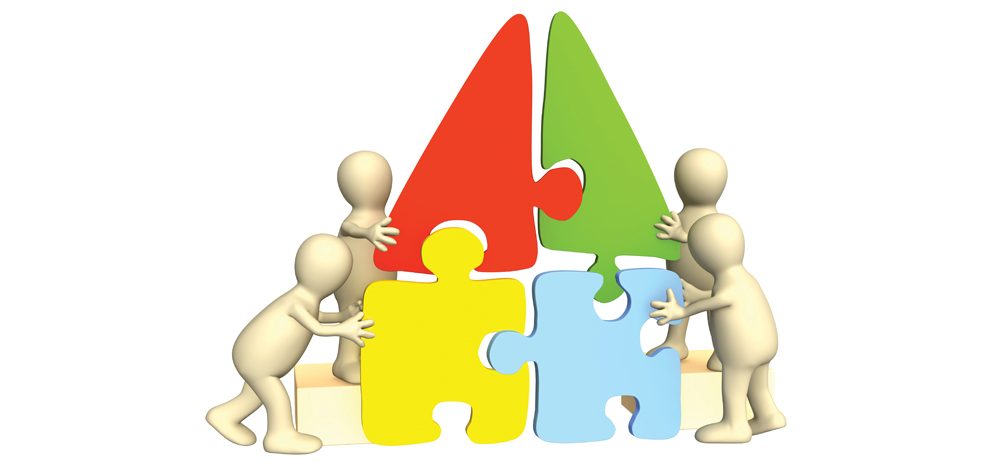Many hospitals have instituted formal shared decision making (SDM) or shared governance to promote excellence in nursing practice. SDM is an important element in hospitals with Magnet® recognition. Bringing bedside nurses together with educators and managers allows sharing of knowledge and expertise to improve patient care and professional nursing practice.
In 2003, the nursing division at TriHealth, a large healthcare system in Cincinnati, Ohio, implemented a new SDM structure based on the councilor model of shared governance (in which a coordinating council integrates decisions made in subcommittees by managers and staff). For the first few years, our coordinating leadership council handled questions or requests to change accountabilities or add committees. But as time went on, questions and requests became too numerous for the leadership council to address. So in 2007, we convened a biennial SDM task force to critically review current suggestions along with our SDM structure and processes. This article describes how we enhanced our SDM task force processes by incorporating appreciative inquiry (AI) to guide the work of the task force.
Since inception of the task force, membership has included representatives from councils, committees, and unit-level shared leadership committees. It also includes representative staff nurses not currently involved in any SDM group. The group of 25 is composed of more than 50% staff and represents a mix of service lines across TriHealth’s two hospitals.
Appreciative inquiry process
As TriHealth nursing’s professional excellence specialists, we are well-versed in SDM and Magnet requirements. When preparing for the 2012 SDM task force, we decided to use the AI process to guide the group’s discussions. In simple terms, AI is a process that recognizes and builds on positive attributes of a particular focus. Each step of the process includes questions that lead to innovation. So often when processes are reviewed, the first step is debating what’s wrong, followed by addressing these “bad” things with action plans. In contrast, AI focuses on strengths, values, and opportunities.
The steps of AI are termed the “Four D’s,” sometimes termed the “Five D’s” if a fifth step is added. Our “Five D’s” include the following:
- Step 1: Define the problem
- Step 2: Discover
- Step 3: Dream
- Step 4: Design
- Step 5: Deliver, alternatively called Destiny. (See Steps in the appreciative inquiry process.)
At our first meeting, we define the problem by discussing the purpose of the task force. We share background information but let task force members determine the purpose. In 2012, the task force defined the current purpose: To influence and enhance the future of professional nursing practice through evaluation of our shared governance structure and function.
In this step, the group begins to understand what AI is all about. With flip charts and markers ready, we pose vital questions: What’s working now? What don’t we want to lose? What are our SDM strengths?
In rapid-fire succession, task force members tell us about the best of what’s currently in place. The energy in the room increases with each item shared. At a recent meeting, one member shared a memorable comment: “We’re pretty good, aren’t we?” By discovering strengths, the task force moves from a problem-solving stance to appreciating and improving identified positive qualities.
This step builds on the strengths discovered in step 2. To create something special, you can’t focus on problems. Beautiful works of art originate from an artist’s vision. So we start this step with art. We divide the team into workgroups and ask each group to draw a picture or symbol that depicts their dream for our nursing division in 5 years. The drawing can include stick figures and can be either realistic or impressionistic. The goal is to start the creative juices flowing. We have a lot of laughs and some sighs, but the “Dream” process keeps us open-minded and more accepting of originality.
Next, we ask each person to write a description of an exceptional team, either real or imaginary. We ask what specifically that person values about this team. From these personal reflections, we move to table discussions on two terms used to describe exceptional groups—efficient and effective. Again, we ask questions to guide workgroup discussions. Examples: Why did you consider this a good working group? What made it effective? How was it able to be efficient?
Brainstorming about our SDM program is the next part of the “Dream” step. (See Brainstorming for dreams.)
In this step, we return to the “Dream” lists and combine similar items for proactive improvements to our SDM program. This topic list becomes our “Top design ideas” list. Examples include communication, mentoring, and accountability. For each topic, specific desires are listed. For instance, under communication, the group wanted a shared computer drive to post council and committee meeting minutes.
The team also reviews suggestions offered to the task force by councils and committees, and matches these with topics in our “Top design ideas” list. We use a worksheet for each item on the list. For each item, members answer the following questions: What’s the benefit? What actions are necessary for this positive change? Who would the change affect? Who needs to be involved? Is there a cost?
The same topics are rotated to each workgroup, allowing members to develop unique answers. This step merges the dream with reality, instead of keeping it buried under organizational difficulties. It also addresses the changes that need to take place to move the dream forward to actuality.
When we dream, we envision our destiny. What does it take to deliver this destiny to our nursing organization? In this final step of the AI process, task force members write recommendations to the leadership council, with rationales for each recommendation so the council understands the destiny envisioned. Task force members include as much detail as possible to expedite the actions when the leadership council assigns the plan’s strategies to individuals or groups.
For our nursing division, the clear task force process has enhanced our ability to continually improve our SDM program. The AI method guides the task force in creating a dream for the program and helps us make the dream a reality.
Selected references
Center for Appreciative Inquiry. Generic Processes of Appreciative Inquiry. (n.d.) www.centerforappreciativeinquiry.net/more-on-ai/the-generic-processes-of-appreciative-inquiry.
Cooperrider DL, Whitney D, Stavros JM. Appreciative Inquiry Handbook: For Leaders of Change. 2nd ed. San Francisco: Berrett-Koehler Publishers; 2008.
Trajkovski S, Schmied V, Vickers M, Jackson D. Implementing the 4D cycle of appreciative inquiry in health care: a methodological review. J Adv Nurs. 2013;69(6):1224-34.
Watkins JM, Mohr BJ, Kelly R. Appreciative Inquiry: Change at the Speed of Imagination. 2nd ed. San Francisco: Pfeiffer; 2011.
The authors are professional excellence specialists for TriHealth in Cincinnati, Ohio.


















